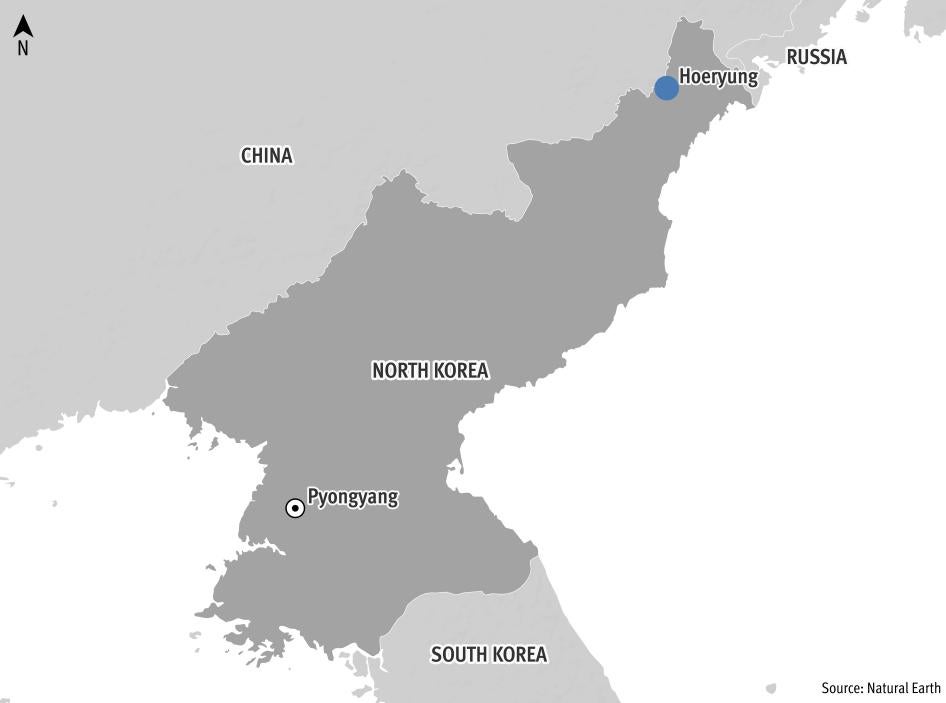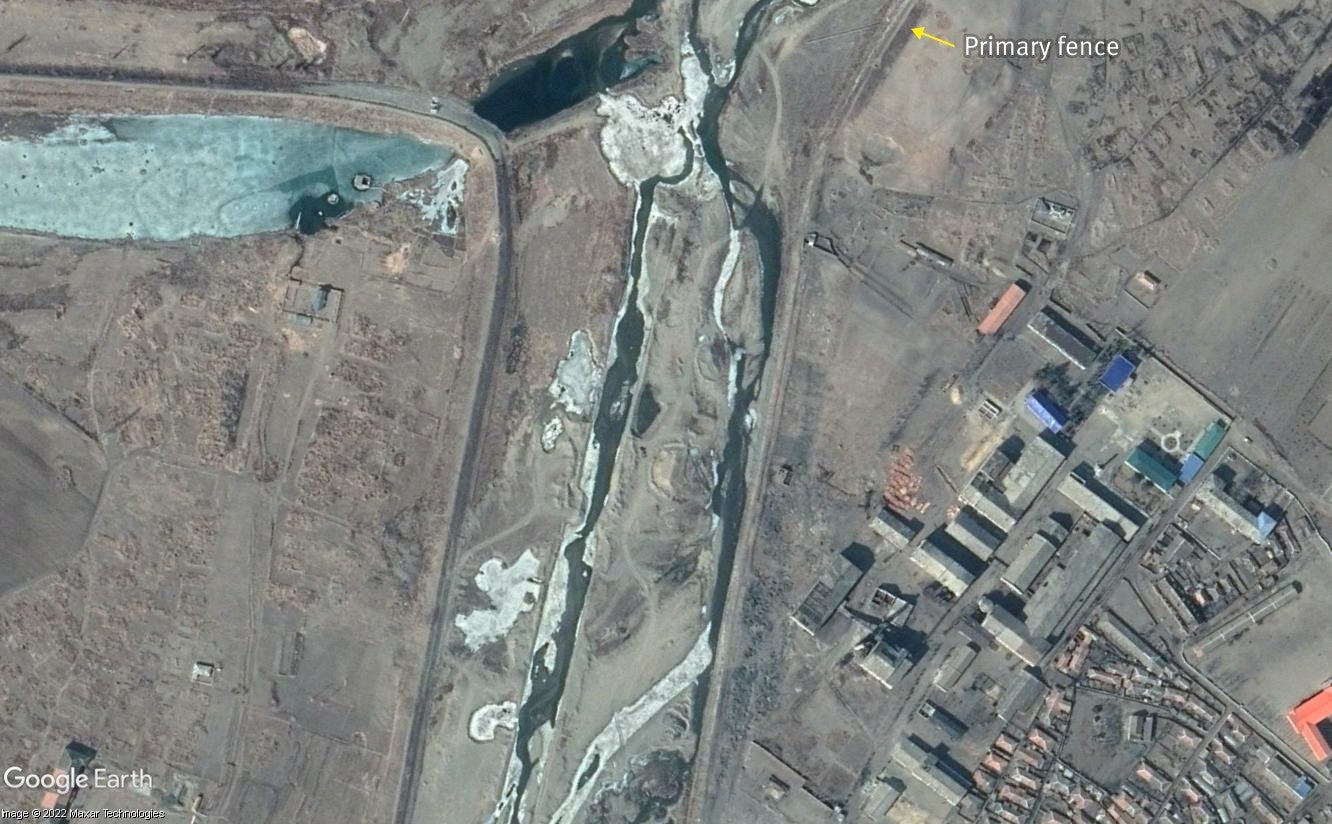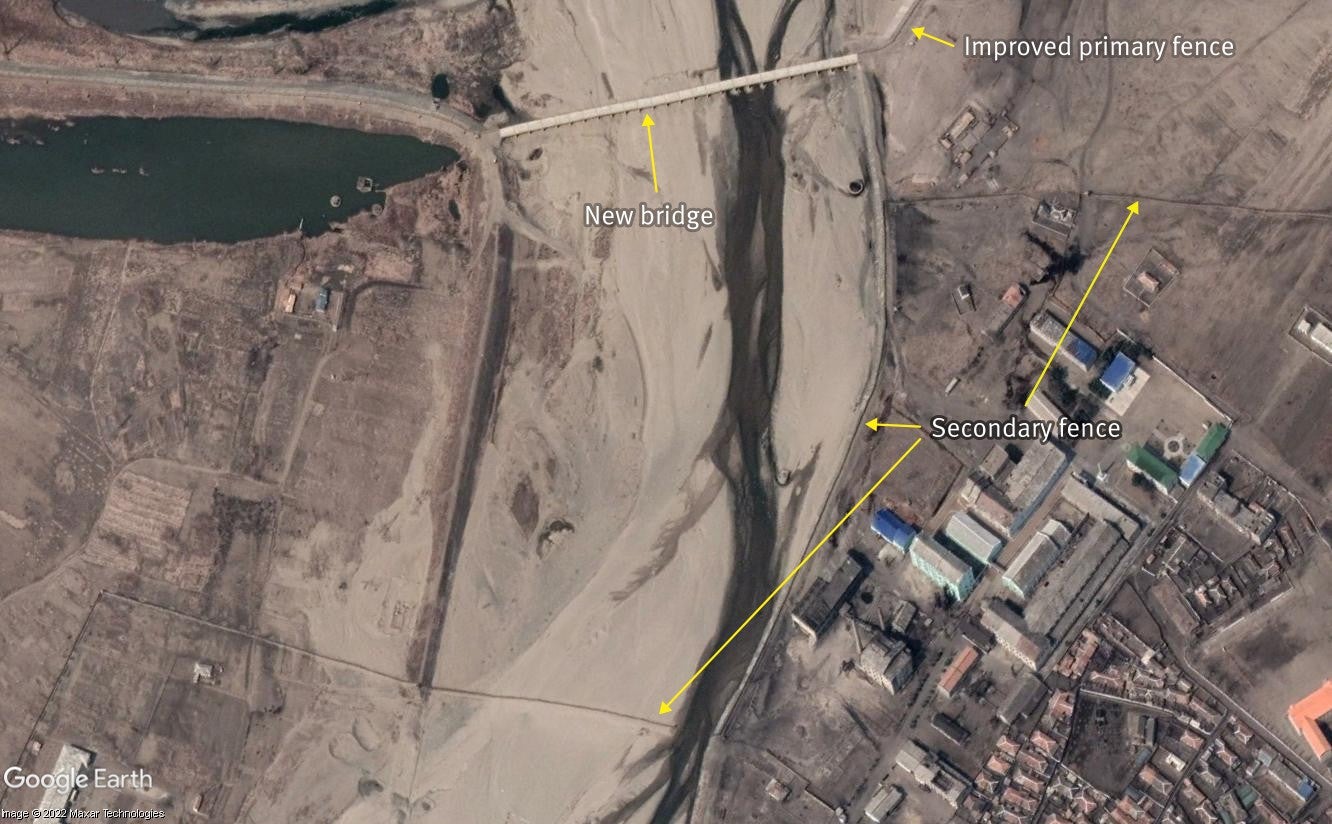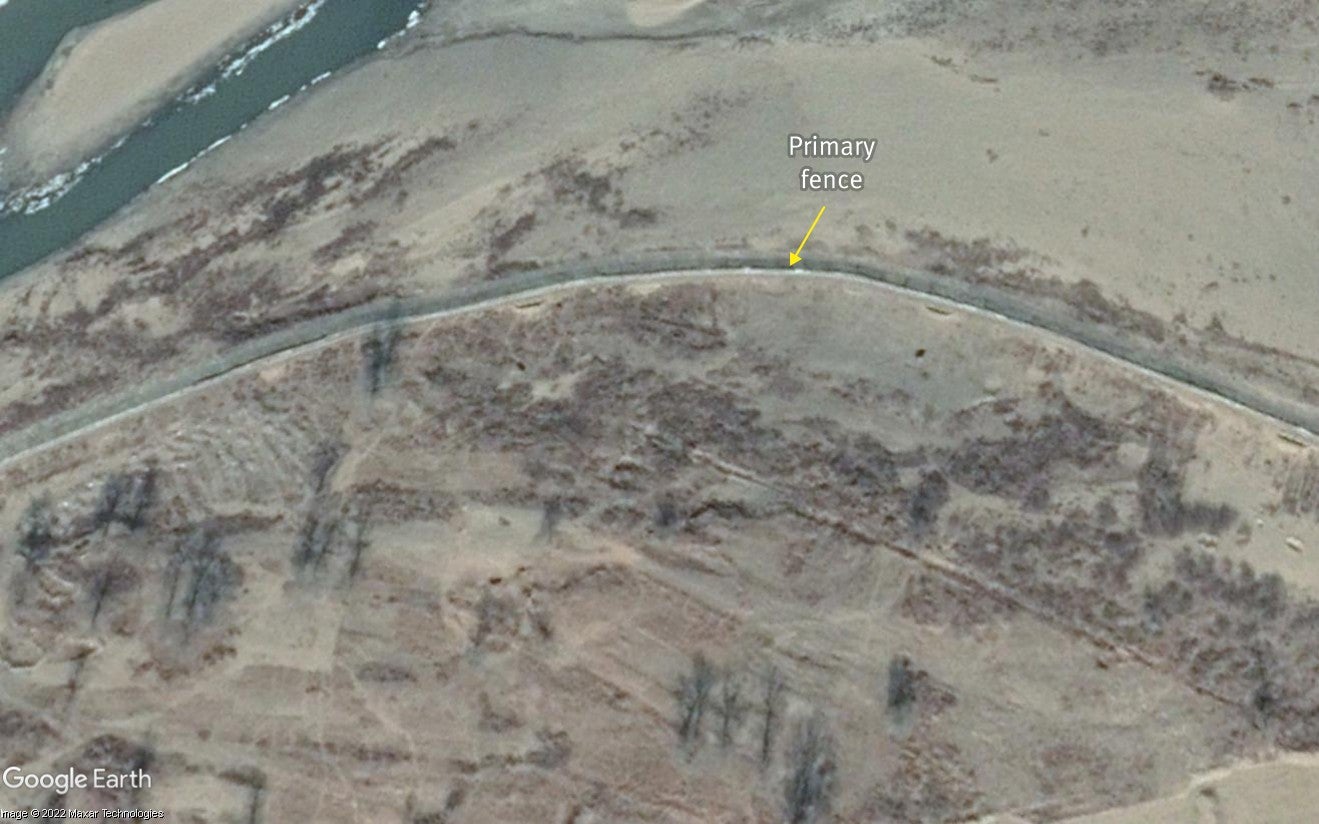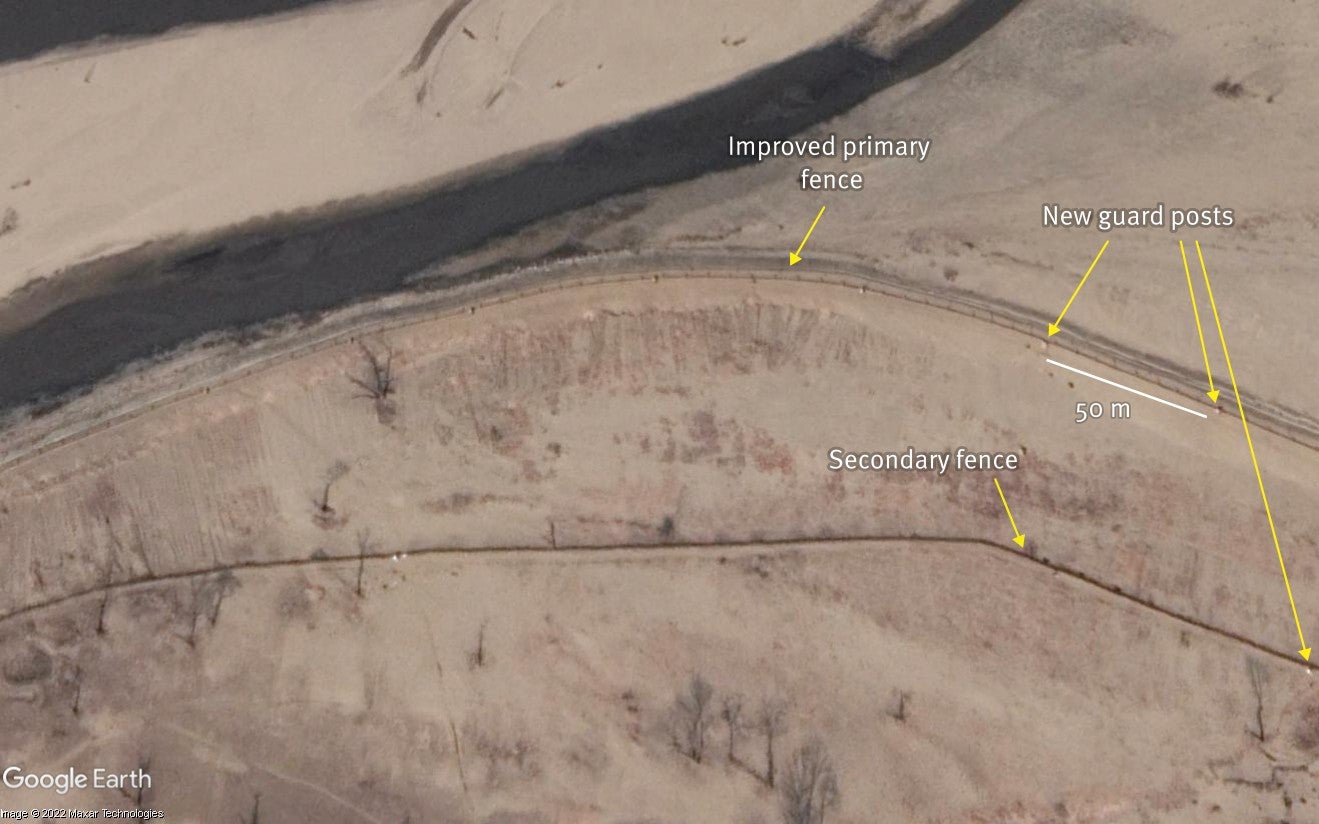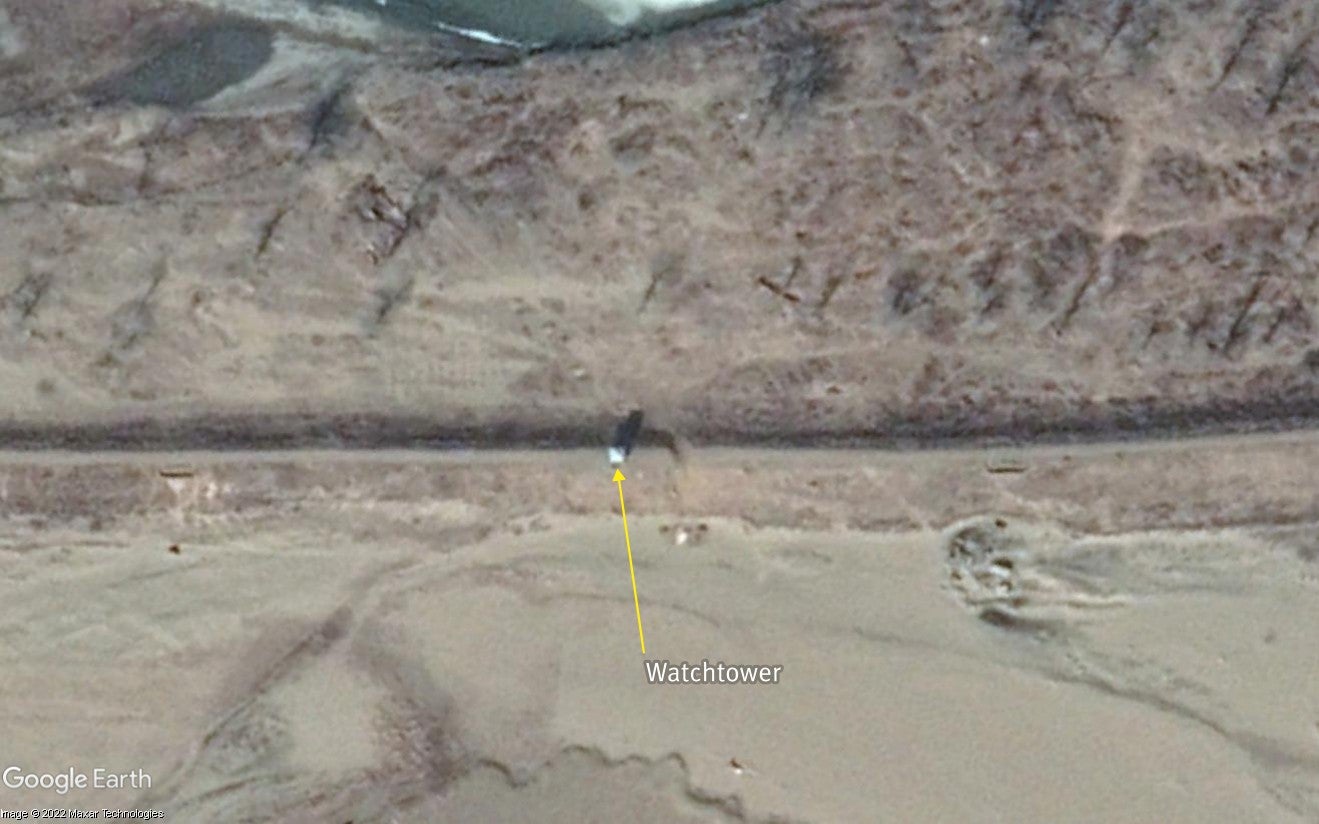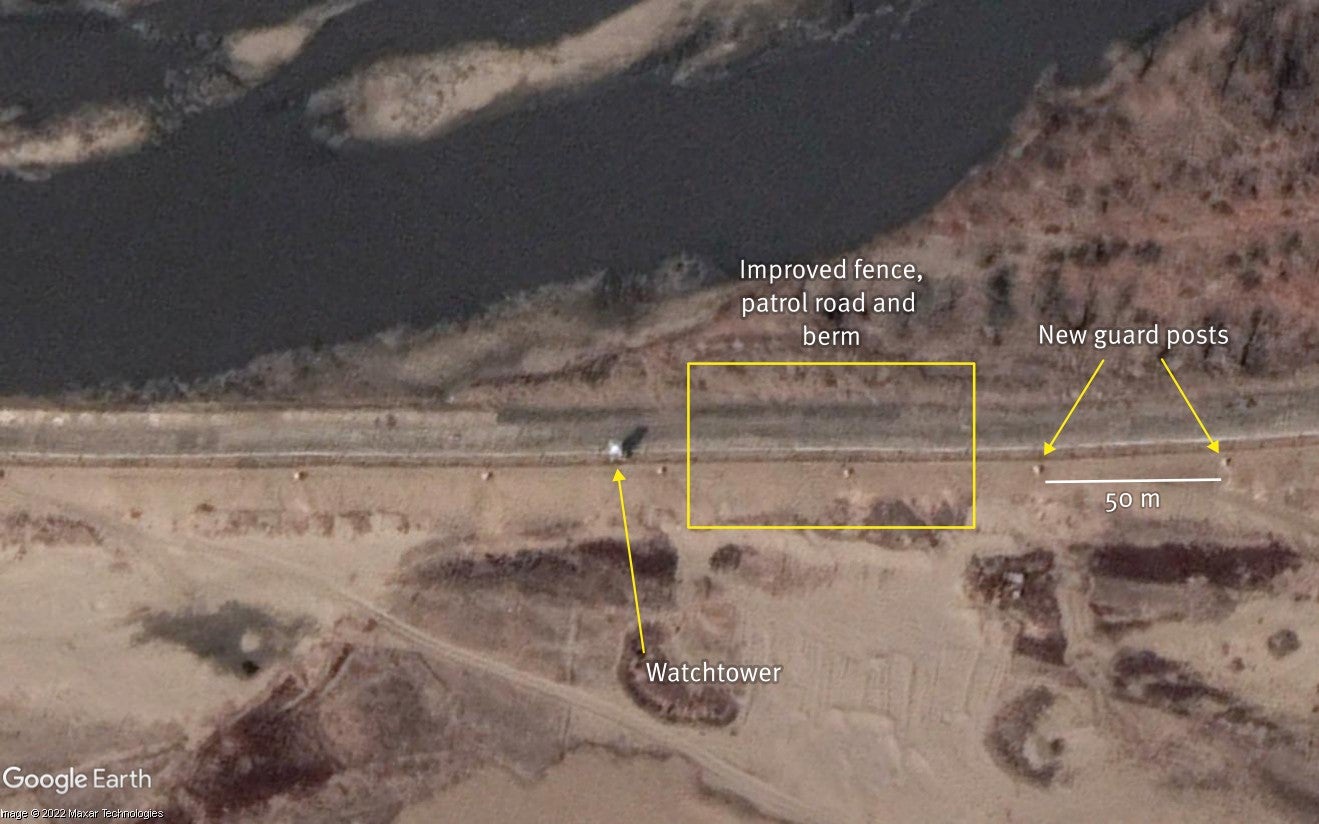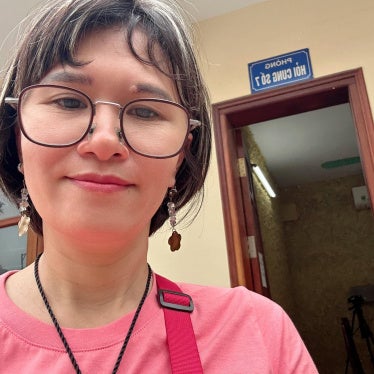(Seoul) – The North Korean government has substantially increased security along its northern border, using Covid-19 as the justification, further restricting travel and trade, Human Rights Watch said today. An initial analysis of satellite images of the China and Russia border before and after the pandemic started, indicates the nature and extent of the measures that the government of leader Kim Jong Un has taken.
North Korean authorities have imposed excessive and unnecessary Covid-19 measures since January 2020. Saying they were necessary to contain the coronavirus, the authorities have built or upgraded fences, guard posts, patrol roads, and other infrastructure on the border. The increased border security has almost entirely stopped unauthorized cross-border economic activity, which has contributed to severe shortages of food, medicine, and other necessities. They have also greatly reduced attempts by North Koreans to seek asylum abroad, violating the right to freedom of movement.
“The North Korean government used purported Covid-19 measures to further repress and endanger the North Korean people,” said Lina Yoon, senior Korea researcher at Human Rights Watch. “The government should redirect its energies to improving access to food, vaccines, and medicine, and respecting freedom of movement and other rights.”
Human Rights Watch has been analyzing satellite imagery covering over 300 kilometers of the northern border, which extends over 1,300 kilometers, comparing security infrastructure there before and after the start of the Covid-19 pandemic. Preliminary analysis indicates that, since early 2020, the authorities have constructed new primary fences in several areas, set up secondary layers of fencing, upgraded preexisting primary fences, improved or widened patrol paths, and built new garrisons, watchtowers, and guard posts along the border.
Human Rights Watch’s current in-depth analysis focuses on a part of the border covering 7.4 kilometers around Hoeryung city on the Tumen River, across from China’s Jilin province. In 2019, the area around Hoeryung was already almost fully fenced and had five watch towers. Images taken in April 2022 show that, since then, authorities have built another 169 guard posts, 9.2 kilometers of new secondary fencing, and 9.5 kilometers of improved primary fencing.
The city of Hoeryung is an active area for official and unofficial cross-border activity. It has an official trade crossing with customs facilities. Hoeryung already had tight security before the pandemic started, built along the reconstructed riverbank following heavy floods in the summer of 2016. The river’s relatively shallow depth facilitated illegal crossings, smuggling, and unofficial trade, particularly following the collapse of the state-run economy in the 1990s.
Five North Korean former traders and smugglers who worked in Hoeryung city and two former government officials who left after 2013 said that security in Hoeryung increased after Kim Jong Un came to power in 2011, and that by 2013, many small-scale traders had been forced to stop smuggling.
Three organizations that previously helped North Koreans flee the country told Human Rights Watch in recent months that new border controls have made their work impossible since 2020. Five North Korean escapees involved in smuggling goods in and out of North Korea said that since February 2020, they have been unable to smuggle any products at all. The five escapees said that out of 10 money brokers they knew who had been sending money into the country previously, only one was still able to do so.
In February 2020, North Korean authorities in the area started work to increase border security. Satellite images of areas around Hoeryung show new security measures progressively appearing after November 2020 until April 2022, the date of the most recent publicly available satellite image analyzed by Human Rights Watch.
The existing primary fence that follows the bank of the Tumen River has been fortified with new guard posts every 50 meters, adding to preexisting watchtowers that were spaced about 1.5 kilometers apart. The patrol road has been renovated and widened. In some sections, significant infrastructure has been added to create new berms and bridges. A secondary fence that was not visible before November 2020 has also been built at a distance, fluctuating between 15 meters to over 600 meters, parallel to the primary fence, creating a de facto buffer zone. Guard posts have been built all along this secondary fence, though more sparsely.
In early 2023, Human Rights Watch will publish a more comprehensive analysis of satellite images of other areas on North Korea’s northern border.
In January 2020, North Korea was the first country in the world to shut its borders in response to the Covid-19 pandemic. The government banned nearly all international travel, blocked almost all official trade, and severely cracked down on North Koreans crossing the border without permission and engaging in unofficial trade with China, which is the main source of almost all food and other necessities for ordinary North Koreans. In August 2020, the government also created “buffer zones” on the border with China and Russia, and ordered soldiers to “unconditionally shoot” on sight anybody entering or leaving without permission, a directive still in force.
North Korea now limits domestic travel almost solely to the movement of essential personnel or those with official travel permits, and of approved goods. As a result, from 2020, food and other necessities have been kept from entering the country, and reduced capacities to move products internally have caused shortages of basic necessities.
“Kim Jong Un has been using the pandemic to further seal North Korea off from the world and restore the government’s complete control over imports and distribution of food and other products,” Yoon said. “But as North Koreans know from the past, solely state-run distribution of food and essential goods only entrenches repression and can lead to famine and other catastrophes.”
The authorities appear to have grown increasingly concerned that frustration with Covid-19 lockdowns could lead to unrest, Human Rights Watch said. In December 2020, the government adopted a law that made receiving information from outside the country a criminal offense, and banned people from possessing unsanctioned mobile phones, and watching or distributing unsanctioned media content. It also ramped up its propaganda campaigns.
In May 2022, North Korea, for the first time, officially recognized a confirmed Covid-19 outbreak. In August, Kim Jong Un “declared victory” over the outbreak, and in September, Kim ordered the authorities to start a vaccination program.
North Korea has ratified core international human rights treaties, including the International Covenant on Civil and Political Rights and the International Covenant on Economic, Social and Cultural Rights. However, the government routinely violates their provisions and takes few, if any, steps to promote, protect, respect, or fulfill its human rights obligations. A 2014 report by the Commission of Inquiry on Human Rights in North Korea found that government officials have been responsible for crimes against humanity against North Koreans and for knowingly causing prolonged starvation.
“The United Nations Security Council should urgently meet to discuss the human rights situation in North Korea, including referring the situation to the International Criminal Court,” Yoon said. “While a resolution may be difficult to reach, the North Korean government needs to see that the world is watching and recording and collecting information about their grave abuses against the North Korean people.”
